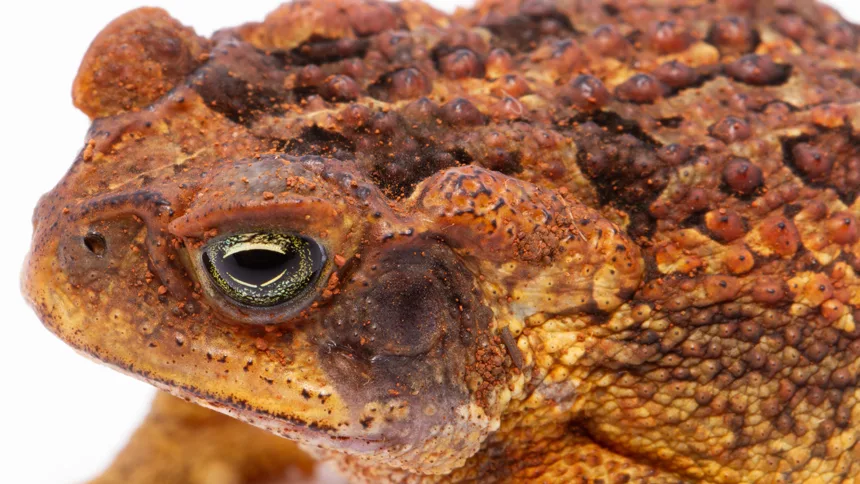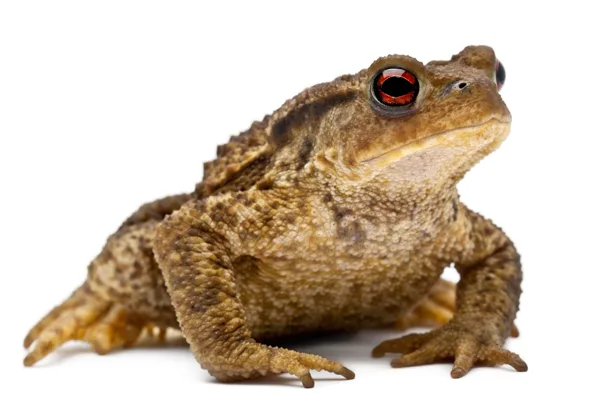
Toad Lifespan: How Long Do Toads Live?
Toads are a type of amphibian that can be found all over the world. They typically have a lifespan of 3 – 5 years in the wild, but can live up to 30+ years in captivity.
Pet toads often have a much longer lifespan than those in the wild due to the ideal conditions and care they receive.
In this article, we will take a look at how long toads live in the wild and in captivity. In addition to this, we will explore some of the factors that contribute to their lifespan.
Page Contents
Toad Lifespan by Species
AnAge is an online database that records the age of many different species. For this table, I’ve important some of the data from their website.
It’s important to know, however, that the numbers listed here don’t represent the maximum age capable for each species.
Here is another way to look at it. While one Yosemite toad might have been recorded living 15 years, it is possible that another Yosemite toad could live well beyond that age under optimal conditions. It just so happens that no one has recorded one living longer.
The Oldest Living Toad?
Scientists believe that Georgie, a common toad introduced to a garden in Hull, England in 1973, may be the world’s oldest living wild toad.
At the very least, she is 40 years old – possibly older. Toads in the wild typically live 10-12 years, while those in captivity can live 20+ years. Georgie is definitely an outlier!
Toads Live Longer in Captivity
Toads in the wild typically have a lifespan of 3-5 years. However, those in captivity can live up to 20 years or more. The main reason for this difference is due to the ideal conditions and care that pet toads receive.
In captivity, toads are protected from predators and environmental hazards. They also have a consistent food supply and access to clean water. These factors allow them to live much longer than they would in the wild.
If you’re thinking about getting a pet toad, be prepared for a long-term commitment. With proper care, your toad could be a part of your family for many years to come!
Factors That Influence A Wild Toad’s Lifespan

There are several factors that can influence a toad’s lifespan, including altitude, predators, environment, pollution and loss of habitat.
Each of these factors can have a significant impact on the toad’s health and lifespan. Let’s take a closer look at each one.
Altitude
Animals that live at higher altitudes tend to have a longer lifespan than those that live in lower altitudes. It could be that animals at high altitudes experience less pollution and fewer predators but it’s difficult to say for sure.
In addition, animals at high altitudes reach sexual maturity later than those at lower altitudes. This might be due to the colder temperatures slowing down their metabolism, which might delay their growth and development.
Predators
Of course, predators can have a significant impact on an animal’s lifespan. Animals that are more prone to being preyed upon will likely have a shorter lifespan than those that are not. This is because they are constantly in danger of being killed and eaten.
Simply put, it’s hard for toads to reach their maximum lifespan in the wild because they have so many predators.
Environment
The environment can have a significant impact on the lifespan of toads, due to natural disasters such as droughts, floods and storms.
Droughts can be very harmful to toads, as they can dry up ponds and rivers where toads live. This can kill many toads and leave the survivors with little food or water.
Floods can also be harmful to toads, although it’s not as serious. After all, toads are amphibians and fair well in water. Still, it’s important to note that changes in the environment can spell disaster for toads, frogs, salamanders, or other animals!
Male vs Female
There is some evidence to suggest that female toads may live longer than male toads. One study found that female toads lived an average of 5.5 years, while male toads lived an average of 4.5 years.
It’s possible that this difference is due to the fact that female toads have a lower metabolic rate than males. This means they use less energy and resources, which may make them more resistant to environmental stressors.
The jury is still out on this topic, but further research is needed to determine whether or not female toads really do live longer than males.
Manmade problems: Pollution, loss of habitat, food
Pollution and loss of habitat are two major problems that can have a negative impact on toads.
When their natural habitats are destroyed, toads may be forced to live in areas with high levels of pollution. This can damage their health and shorten their lifespan.
In addition, as their habitats shrink, toads may have a harder time finding food and mates. This can also lead to a shorter lifespan.
Frogs and toads are a popular food item in many cultures around the world. They are considered a delicacy, and people enjoy eating their meaty legs. This may be the case with the world’s largest frog, the Goliath Bullfrog, who is readily snatched up by anyone looking for frog legs.
Finally, toads have been used in traditional medicine for many years in different cultures around the world.
Toad Lifespan FAQs
This section is meant to answer some of the most common questions regarding the lifespan of toads.
Toads can live for a number of years, depending on the species. Some toads may live for just a few months, while others may live for up to 15 years.
Toads can also have a longer lifespan in captivity, as they are not subjected to the same dangers and stresses as they are in the wild. Some toads have been known to live for over 20 years when kept in captivity.
Factors that can influence a toad’s lifespan include its environment, predators, sex and manmade problems such as pollution and loss of habitat.
There is some evidence to suggest that female toads may live longer than male toads, but more research is needed to confirm this.
Toads are very susceptible to environmental stressors, such as pollution and loss of habitat. Pollution can damage their health and shorten their lifespan. In addition, as their habitats shrink, toads may have a harder time finding food and mates. This can also lead to a shorter lifespan.
Conclusion
Toads can live for a number of years, depending on the species. Some toads may live for just a few months, while others may live for up to 15 years. Female toads may live longer than male toads, and pollution and loss of habitat can shorten a toad’s lifespan.
Also, toads have a longer lifespan in captivity, as they are not subjected to the same dangers and stresses as they are in the wild. Some toads have been known to live for over 20 years when kept in captivity.

Leave a Reply